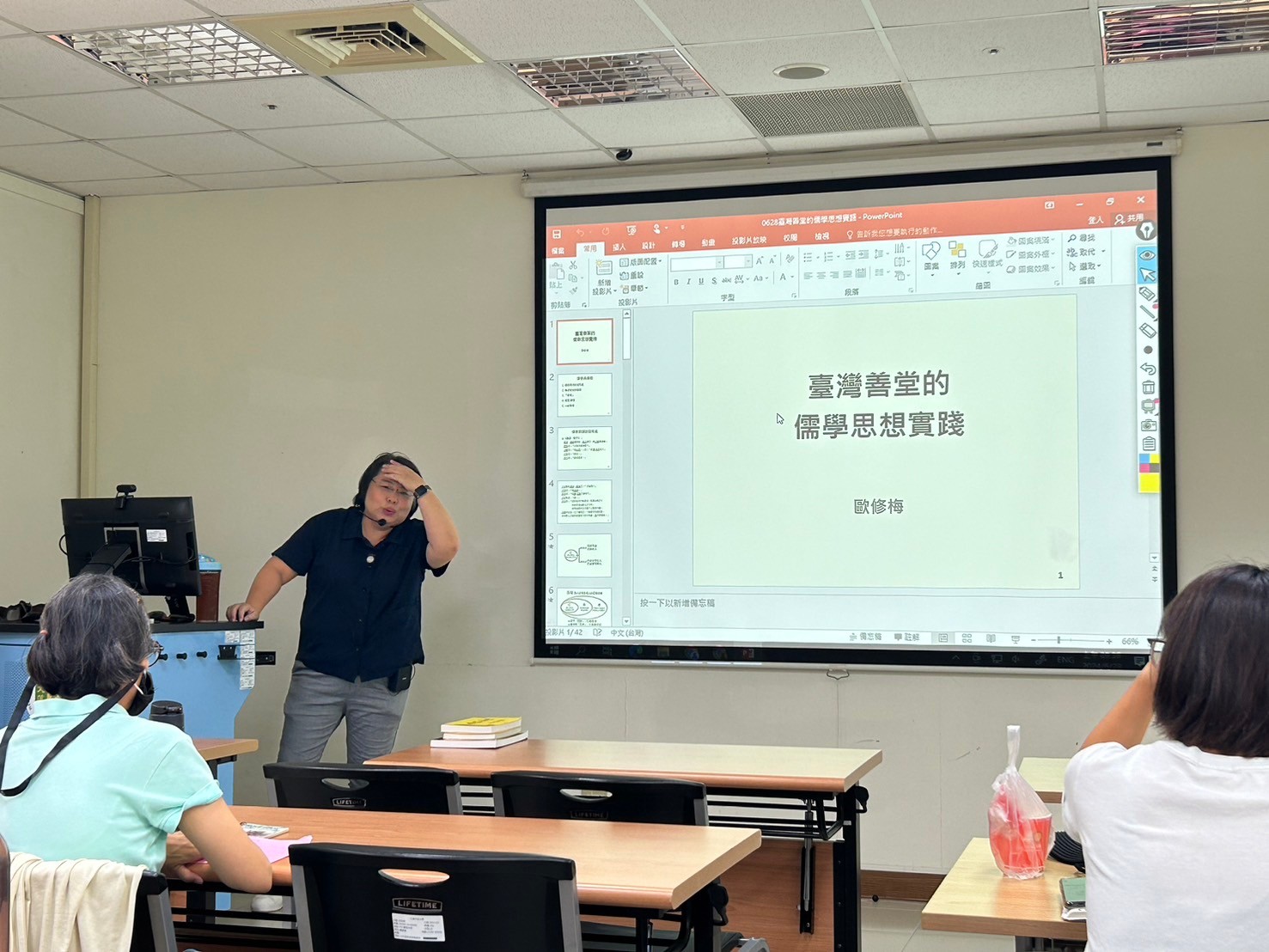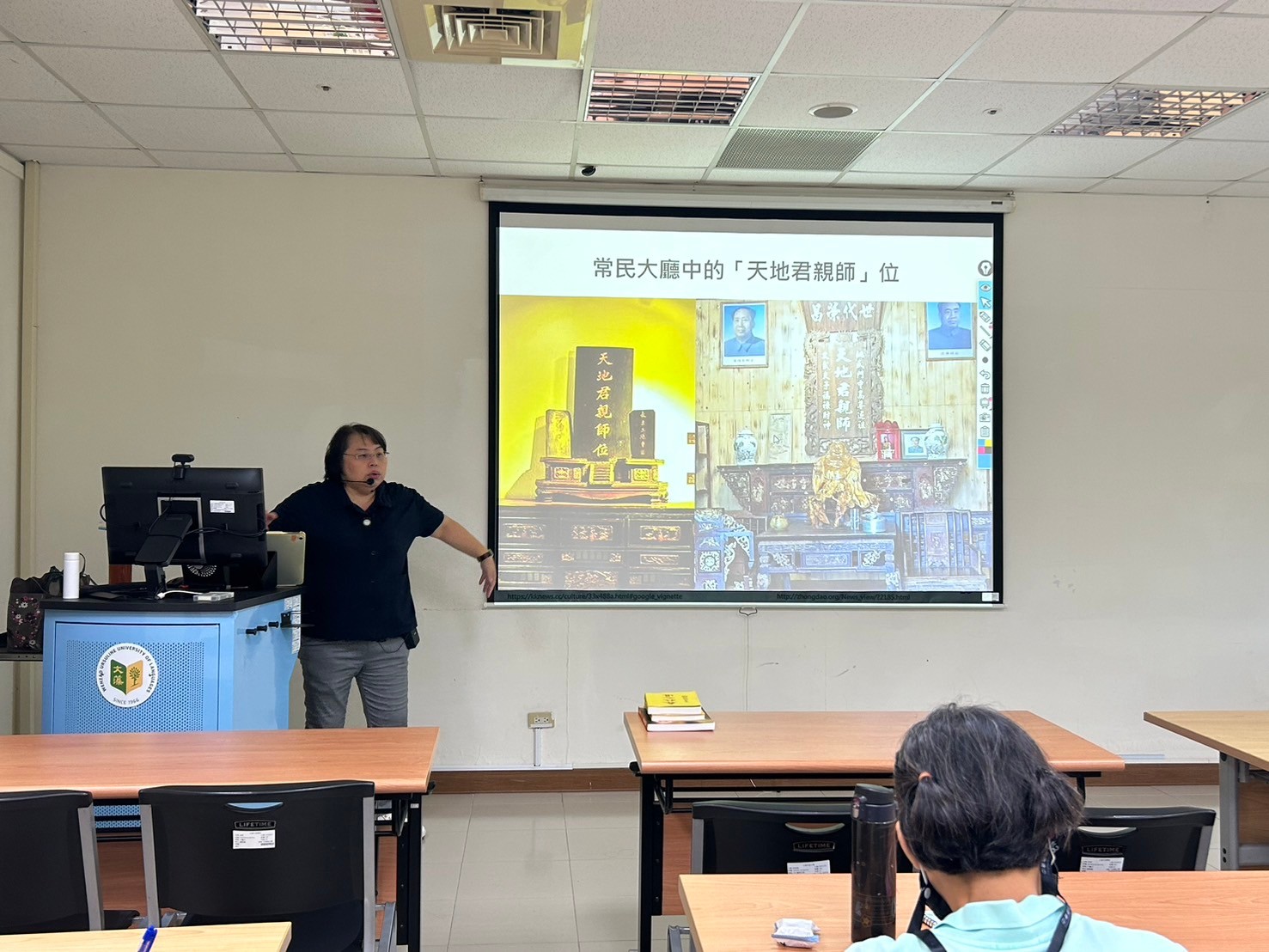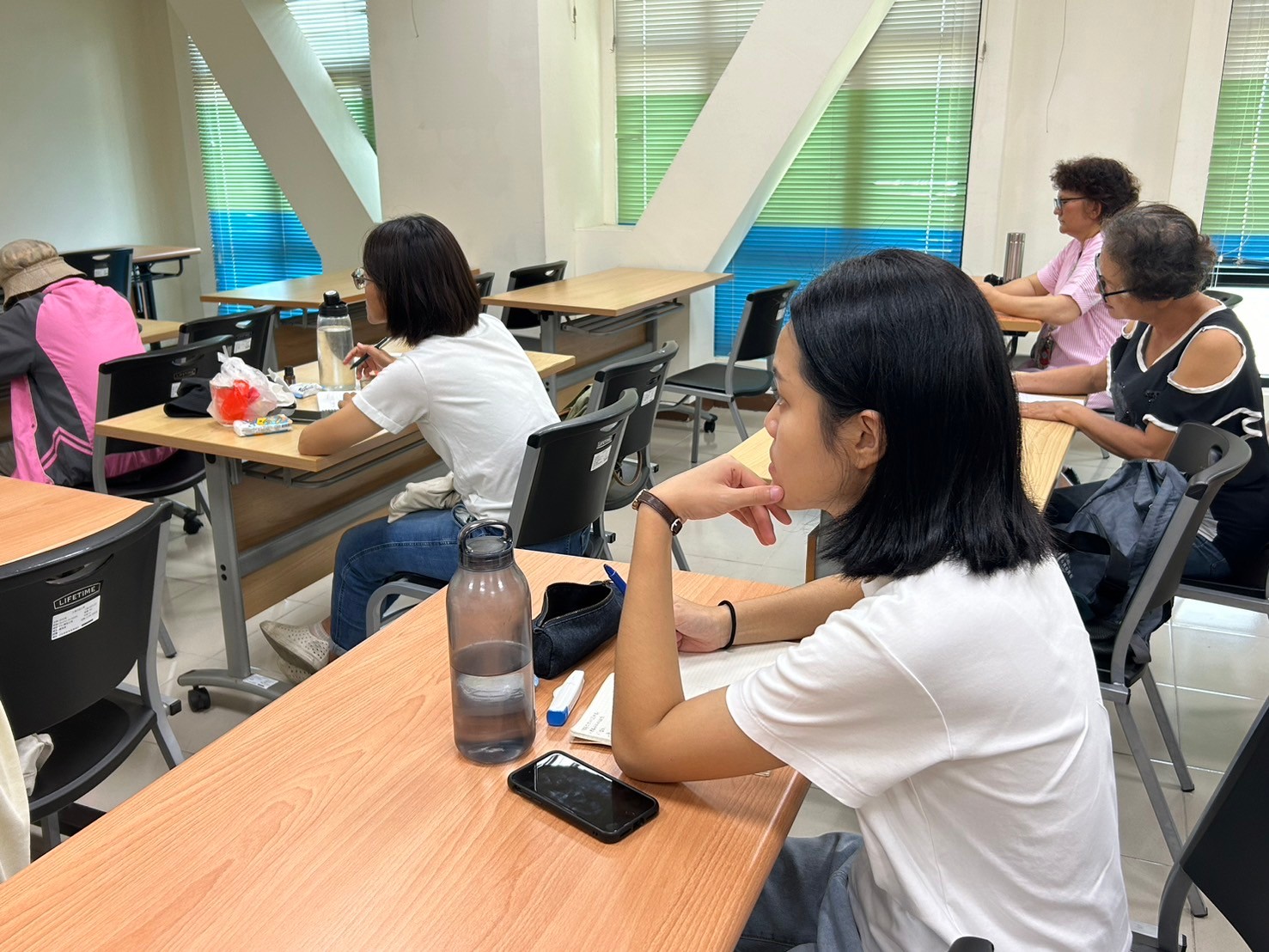by Rose, Project Student
Wenzao Ursuline University of Languages' USR project, "OUR TOWN Community Sustainable Cross-Domain Collaborative Platform Project," held the final special lecture of this semester's Stories Interviewing Editors Community on June 28. Teachers and students from Wenzao, as well as anyone interested in local history and culture, were invited to attend. This lecture was once again taught by Professor Ou from the Department of Applied Chinese. She discussed the evolution and significance of Confucian thought, the connection between religion and Confucianism, and provided an in-depth introduction to the distinctive local shantangs and fu-luan culture. This lecture summarized the relationship between Confucianism and the common people, bringing this semester's activities to a perfect conclusion.
Professor Ou began her lecture by sharing the story of the hermit from the "Analects of Confucius, Weizi." She reminded the participants of the core idea of orthodox Confucianism—the significance of "ren" (benevolence). "Ren" signifies a loving heart, an empathetic heart that extends to others, and an active heart that encourages people to not only adhere to the principle of "Do not impose on others what you do not desire yourself" but also to practice "Help others achieve what you wish to achieve yourself." This means that we should not only refrain from imposing our dislikes on others but also actively assist and support others, and take joy in their success. From personal moral cultivation and family harmony to societal governance, this practice of "empathy" and "self-discipline and adherence to propriety" is deeply rooted in our standards of interaction and conduct. It has an immensely positive influence on the harmony of contemporary society.
In the second half of the lecture, Professor Ou focused on the relationship between Confucianism and religion. The term "Confucianism" encompasses different forms, representing both the indoctrination of Confucian teachings and the religious aspects of Confucianism. Faith activities primarily driven by Confucian indoctrination are usually led by the government, with Confucius, Supreme Sage Master, as the principal deity. The core beliefs are derived from Confucius, Mencius, and Xunzi, with rituals centered around expressing gratitude to teachers. The Kaohsiung Confucius Temple is one such important site for Confucian indoctrination. On the other hand, the religious aspect of Confucianism is more often driven by the people themselves, encompassing a belief system that includes various deities from Buddhism, Taoism, and local faiths, who are willing to listen to the daily prayers of their followers. These deities are not only worshipped by scholars but are integral to the broader community. For example, Kaohsiung's Chi Ming Hall enshrines Koxinga, the God Emperor Guansheng, and Yue Fei, with Confucius himself worshipped in the rear hall. These deities hold significant places in local beliefs, and their integration with Confucianism showcases Taiwan's unique phenomenon of religious fusion.
In this lecture, participants not only gained a deeper understanding of the relationship between Confucianism and the common people but also developed a more profound insight into the practical application of Confucian principles in contemporary society. The "OUR TOWN Community Sustainable Cross-Domain Collaborative Platform Project" aims to enhance the cultural literacy and knowledge of participants through themed lectures, connecting local beliefs, cultural venues, and the community. This allows more people to understand the land that nurtures us, and by combining their interview, editing, and writing skills, they contribute to the promotion of local revitalization and the old town of Zuoying. The "Community Story Interview and Editing Group" has successfully concluded its activities for this semester. We will launch the project again next semester and look forward to meeting all the participants in Zuoying Old Town!

Teacher conducted the opening of the activity.

Professor gave an introduction of the lecture.

Participants focused on the lecture.

Group photo
